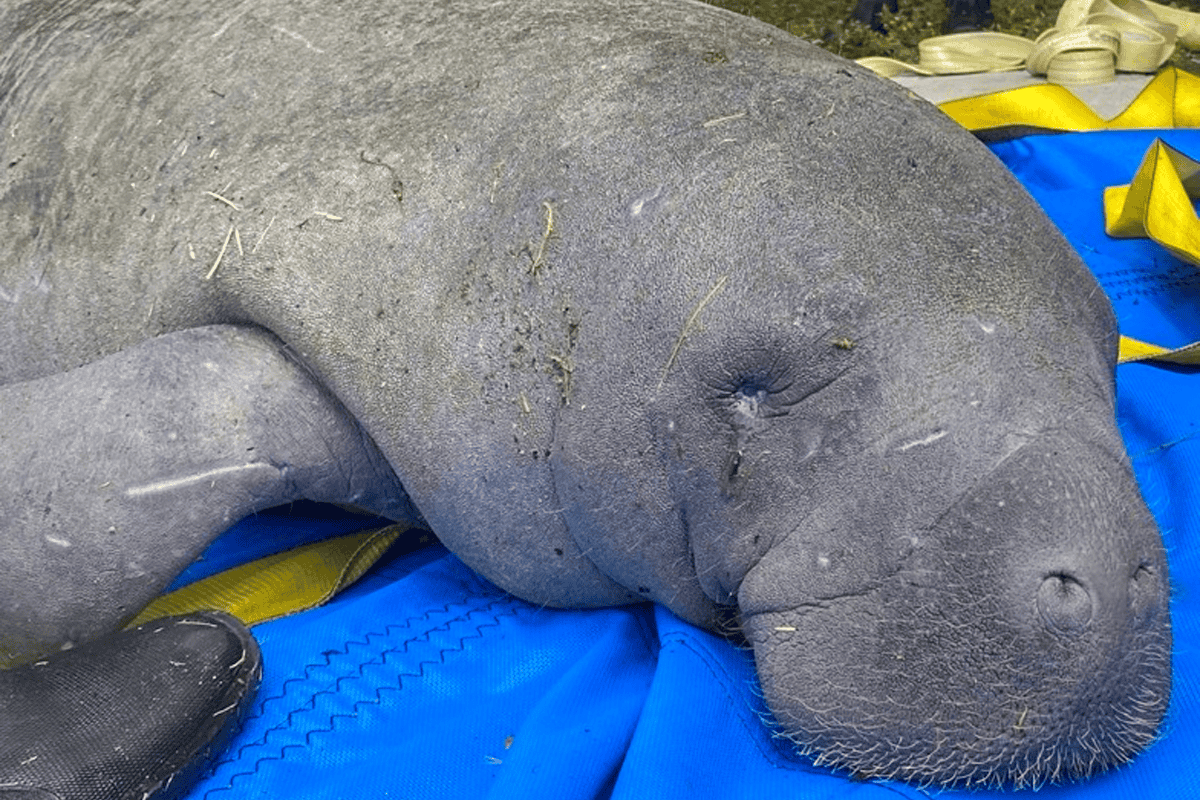Rescued manatee ‘Flapjack’ transported from St. Petersburg estuary to SeaWorld

ST. PETERSBURG, Fla. – The Florida Fish and Wildlife Institute, teaming up with ZooTampa, Clearwater Marine Aquarium, and the Pinellas County Sheriff’s Office recently assisted in rescuing a manatee named Flapjack trapped in a St. Petersburg estuary.
The thin manatee was rescued from Clam Bayou, a 170-acre estuary in Pinellas County. The estuary is surrounded by Gulfport to the west, Boca Ciega Bay to the south, and St. Petersburg to the north and east.
A majority of Clam Bayou, 127 acres, is publicly owned.
According to the Florida Fish and Wildlife Institute, or FWC, Flapjack was successfully rescued and given an examination prior to being transported to SeaWorld in Orlando. The institute noted the manatee’s thin condition and health history as deciding factors for care and rehabilitation.
Furthermore, Flapjack was scanned for a Passive Integrated Transponder, or PIT tag, which is commonly used by veterinarians to help with the identification and return of lost pets.

Flapjack was first tagged in 2021 after being spotted in the Weeki Watchee river in Hernando County, approximately 70 miles north of St. Petersburg. The manatee was then taken to ZooTampa for rehabilitation and released back into the wild in 2022.
Florida manatees are large, aquatic mammals native to the state. However, it has been discovered as far west as Texas and as far north as Massachusetts during the summer months.
During the winter, it typically resides in Florida, as it requires warm water to survive.
The manatee, sometimes referred to as the Sea Cow, usually grows between 9-10 feet long while weighing 1,000 pounds. Although, they have been known to reach over 13 feet long and weigh 3,500 pounds.
They are commonly recognized by their finely-wrinkled, leathery looking skin that often flakes off. Manatees also have two fore limb flippers used for steering, which help it hold vegetation while eating. Additionally, their large, round, flattened paddle-shaped tail is used for swimming.
A subspecies of the West Indian manatee, the Florida manatee was downgraded from endangered to threatened by the U.S. Fish and Wildlife Service in 2017 following a population increase over the past 30 years.
The Florida manatee population is estimated to be between 5,700 and 8,800, with approximately 3,300 living on the state’s west coast and 2,400 on the east coast. New figures on its population by the Florida Fish and Wildlife Research Institute for 2021 and 2022 are expected to be released this year.
While its population is improving, Manatees are still vulnerable to being struck by vessels, often with scars, due to their slow speed and high buoyancy. They also continue to be threatened by loss of warm-water habitat, die-offs from red tides, and cold weather events.
For information on supporting manatee research and rescue, click here.



